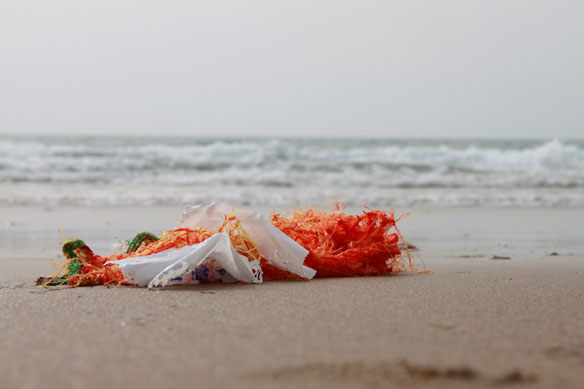
“The unprecedented plastic waste tide plaguing our oceans and shores, can become as limited as our chosen relationship with plastics, which involves a dramatic behavioral change on our part…”
Captions and Photo: © SAF — Coastal Care
Excerpts;
As plastic manufacturing continues to grow and man-made debris continues to invade the ocean, the plastic-pollution crisis remains one of the most serious threats to our planet.
First and foremost, we’ve learned that sustainable change will come through an educated and aware society.
Although we know sustainable change begins with education, we’re well aware that major solutions are being achieved through attacking the problem at its source…
Read Full Article, Algalita Foundation / Huffington Green
Boyan Slat to Deploy ‘Longest Floating Structure in World History’ to Clean Ocean Plastic, EcoWatch (06-03-2015)
Boyan Slat, the 20-year-old CEO of The Ocean Cleanup, has officially announced that the world’s first ocean-cleaning system is set to deploy in 2016. The pilot program will be operational for at least two years in the proposed deployment location of Tsushima island in Japan…
Here’s How Much Plastic Ends Up In the World’s Oceans, (02-13-2015)
Every year, 8 million metric tons of plastic end up in our oceans, it’s equivalent to five grocery bags filled with plastic for every foot of coastline…
Plastic waste in ocean to increase tenfold by 2020, Independent UK (02-12-2015)
Biodegradable Plastics Are as Persistent as Regular Plastics, Study Finds, Yale E360 (03-19-2015)
Plastics designed to degrade don’t break down any faster than their conventional counterparts, according to research published in the journal Environmental Science and Technology…
Plastic Pollution: “When The Mermaids Cry: The Great Plastic Tide,” Coastal Care
The world population is living, working, vacationing, increasingly conglomerating along the coasts, and standing on the front row of the greatest, most unprecedented, plastic waste tide ever faced. Washed out on our coasts in obvious and clearly visible form, the plastic pollution spectacle blatantly unveiling on our beaches is only the prelude of the greater story that unfolded further away in the world’s oceans, yet mostly originating from where we stand: the land…

Plastic pollution.
For more than 50 years, global production and consumption of plastics have continued to rise. An estimated 299 million tons of plastics were produced in 2013, representing a 4 percent increase over 2012, and confirming and upward trend over the past years. In 2008, our global plastic consumption worldwide has been estimated at 260 million tons, and, according to a 2012 report by Global Industry Analysts, plastic consumption is to reach 297.5 million tons by the end of 2015.
Plastic is versatile, lightweight, flexible, moisture resistant, strong, and relatively inexpensive. Those are the attractive qualities that lead us, around the world, to such a voracious appetite and over-consumption of plastic goods. However, durable and very slow to degrade, plastic materials that are used in the production of so many products all, ultimately, become waste with staying power. Our tremendous attraction to plastic, coupled with an undeniable behavioral propensity of increasingly over-consuming, discarding, littering and thus polluting, has become a combination of lethal nature… Captions and Photograph: © SAF — Coastal Care








